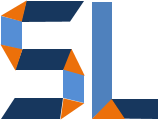In a world where most businesses use many computer applications to document and track transactions; trainers often struggle to provide effective software training. The most common occurrence explaining why this happens is the appointment of a Subject Matter Expert (SME) in the application to conduct the training. SMEs tend to view the world through their our experience thus usually applying a lecture, demonstration and “now you try it” approach to training. In this post, I cover an optimal approach to technical training in computer applications following a constructivist docent style.
Purpose
Always begin software training with a clear introduction explaining to the learners why they need to know the application and how it impacts the business.
1. Login and Navigation
Once learners know what the application is for, demonstrate how to log in and provide an overview of its features (navigation). Learners should know the credentials needed to get into the system i.e. UserName and Password. Users should also learn how to recover the password if lost or forgotten.
2. Map Business Functions to Software Functions
The trainer should have an outline of the necessary business functions the software facilitates i.e. in pharmacy management systems this could be how to enter a prescription and send it for approval by a pharmacist. This strategy helps the trainer illustrate how the software relates to the business and gives users a quick guide to get familiar with the various functions available.
3. Have a Test Environment
Ideally, you should have a replication of the PRODUCTION environment (the real thing) available so your learners can use the software and make mistakes without compromising live data.
4. Let Them Drive
Remember how you learned to drive a car or a bicycle? Yes! You drove it! Well, you must do the same for your software learners. All that knowledge in your head without meaningful and substantial application within the context of the business is useless.
5. eLearning Simulation Tests
eLearning authoring tools like Articulate Storyline2 have a screen casting feature that allows you to record mouse movements as you perform a software task. The feature can be used in View (shows how it’s done), Practice (users are prompted to click and follow along) and Test mode (no prompts, the user must know where to click without assistance). You are wasting a considerable amount of practice time and application without simulations.
Conclusion
Technical or software training is best delivered by explaining the purpose of the application for the learner. Login and navigation are essential for learners to find their way around and recover passwords. Test environments provide a fail safe scenario where learners can try what they know and see the results without disturbing operations. Last, but not least, effective software training is about providing knowledge, aligning context with business needs and application (practice, practice, practice).





